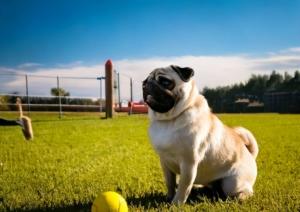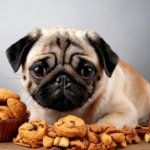Pug Training 101: Because That Wrinkly Face Still Needs Discipline
Let’s be real: Pugs are adorable, slightly dramatic, snack-driven comedians in dog form. Training one is less like raising a dog and more like negotiating with a tiny dictator in a fur coat. But fear not — with patience, consistency, and the occasional bacon-flavored bribe, you’ll have a well-mannered little mischief-maker in no time.
Understanding Your Pug: A Lovable Loaf With Attitude
Before you can teach your Pug anything, you must know what you’re dealing with. Imagine them as lovingly chaotic in a snorty little package.
- Independent, but under no circumstances can they be alone for longer than five seconds.
- Sensitive to tone, so yell and you’ll receive the side-eye of doom.
- Attention span of a goldfish at a disco.
- Stubborn enough to defy gravity if you utter “no.”
- Driven by snacks more than any life aspiration.
If you get their vibe, you’ll get results.
Creating a Training Schedule (Or: Fooling Them Into Thinking It’s Playtime)
Pugs aren’t keen on structure, but your mission is to make them believe structure = treats.
- Make sessions brief. Ten to fifteen minutes maximum before they begin napping in the middle of the command.
- Train when they’re not cranky but also not overexcited like a kid after dessert.
- Break so they don’t feign forgetting what “sit” is.
- Mix things up to prevent boredom and rebellion.
- Reward quickly and frequently. Pugs are not here for an endurance test, not a long-winded lecture.
Positive Reinforcement: Bribes With Benefits
Pugs are most responsive to praise that reeks of chicken.
- Treats are the royal treatment. The smaller and more delicious, the better.
- Cheerleading-style praise. Like, for example, “Good boy.” “Good girl.”
- Playtime as a reward. Nothing expresses “good dog” quite like a tug toy.
- Timing is everything. Wait too long, and they’ve already forgotten why you’re rewarding them.
- Consistency is key. Reward the same behavior every time, or they’ll begin freelancing their own rules.
Consistency: Or, How to Not Confuse Your Pug (or Yourself)
You can’t expect results if you’re changing the rules like it’s a game of improv.
- Use the same commands and gestures every single time. Yes, even when you’re tired.
- Stick to a schedule. Pugs might pretend they don’t care, but they do.
- Everyone in the house needs to follow the same rules. If one person lets them on the couch, guess where they’re sleeping forever.
- Calm down. Pug training is not a sprint, it’s a snack-filled marathon
Socializing Your Pug: From Couch Potato to Party Animal
A socialized Pug is a bold Pug. And it’s less humiliating when they get introduced to your friends.
- Make a start early. Acclimatize them to various noises, smells, and sights before they begin barking at the microwave.
- Introduce them to people frequently. Nice faces = treat machines in their books.
- Arrange playdates. Controlled doggy bedlam gives them manners.
- Think about puppy classes. Wonderful for socialization and provides you a break while someone else instructs your Pug to sit.
House Training: Teaching Them Where Not to Go
Potty training a Pug takes the saintly patience and track star speed.
- Choose a bathroom location and stay there like glue.
- Maintain a routine, even if they throw you the “but it’s cold outside” pout.
- Praise them like they just won the lottery each time they eliminate in the correct location.
- Keep an eye on them inside like a hawk — they’re crafty.
- Use a crate when you can’t watch. It’s not punishment, it’s prevention.
Handling Behavioral Issues: Because Sometimes Pugs Are a Lot
They’re adorable, but not flawless. Here’s how to cope with the most prevalent Pug naughtiness.
- Barking and whining? Pin down the cause and instruct in the art of silence (treats being given).
- Aggression? Uncommon, but if it occurs, determine the source and perhaps call a professional.
- Separation anxiety? Exercise departure as if no huge deal. Begin slowly. Conceal your guilt.
- Be steadfast. No “maybe” commands or “just this once” exemptions.
- If necessary, employ a brief time-out. Just long enough for them to reflect on their life decisions.
Training Tools: A Pug Parent’s Toolbox
You don’t require fancy devices — just the appropriate ones.
- Collar and leash: Tight, but not choking. Because walks are for parading.
- Harness: Pug necks + pulling = no good. Opt for comfort and control.
- Clicker: For the hi-tech trainer. Click = treat. It’s dog magic.
- Training treats: Small and soft and irresistible. Like edible money.
- Training pads: For first days and rainy weather. Also, when they look outside the window and say, “Nah.
Advanced Training Tips: Because Your Pug is Smarter Than They Act
Ready to level up?
- Stay with routines. Even rebels like structure.
- Gradually phase in praise as a reward — but don’t rush it, or they’ll rebel.
- Clicker training assists with timing and concentration.
- Keep sessions short, sweet, and full of panache.
- Stay socializing. New environments, new humans, new reasons to be cute.
- Attempt complicated tricks. “Play dead” is a crowd-pleaser — and no, it’s not a nap.
Long-Term Success: Keeping Your Pug on the Path of Good Decisions
Training never stops, it just becomes a way of life.
- Practice on a regular basis, even if it is just a quick session.
- Continue rewarding — consistency pays off.
- Hold on to habits. Even holidays require potty stops.
- Mix it up. New games = new excitement.
- Monitor their health. A grouchy Pug may only need a visit to the vet.
- Be patient. Your Pug is doing their best. Mostly.
Common Mistakes to Avoid: AKA How Not to Train a Drama Queen
- Skipping sessions. Miss one and they forget everything. Probably on purpose.
- Yelling or punishing. Pugs don’t do guilt, they do grudges.
- Avoiding socialization. You’re not doing them any favors by hiding them away.
- Overfeeding treats. Chunky Pugs are cute, but health matters.
- Expecting instant results. They’re adorable, not geniuses.
Final Thoughts: You’ve Got This (Probably With Treats in Your Pocket)
Pug training is half strategy, half snack dispensation, and half stand-up comedy. With patience, love, and enough consistency to be a monk’s dream, you’ll have a happy, well-mannered, happily spoiled Pug who thinks you’re the best human in the world — which, granted, you likely are.





